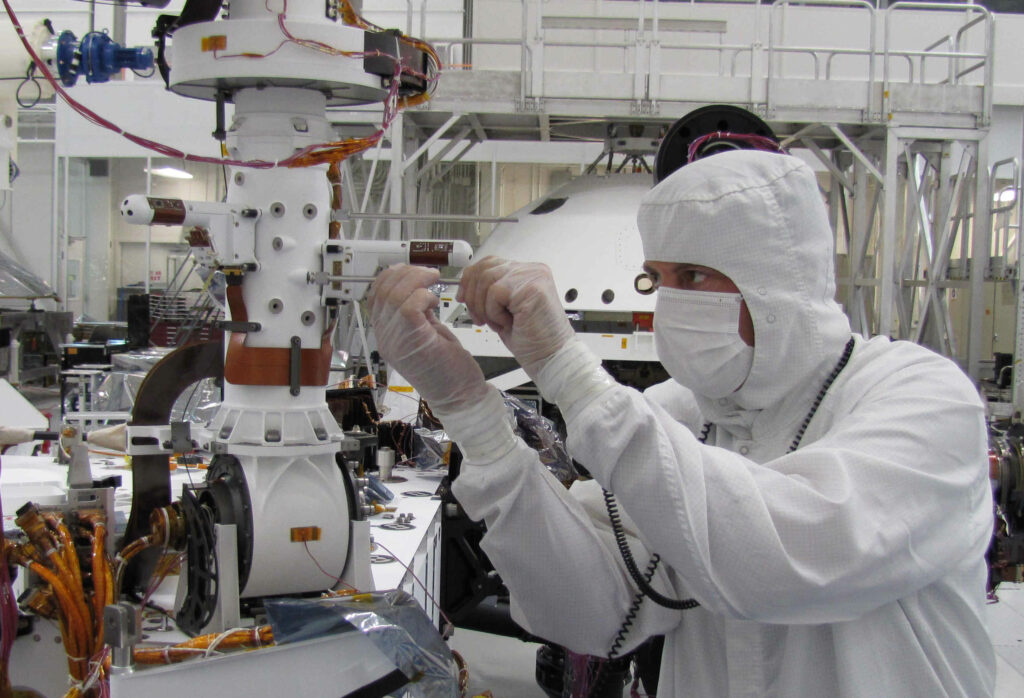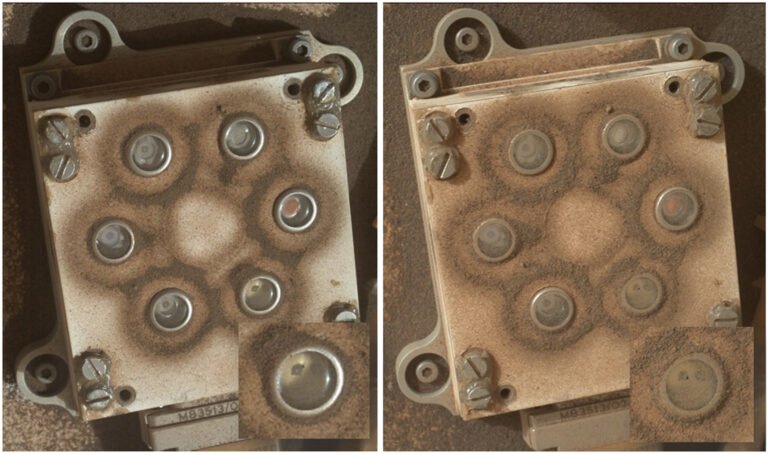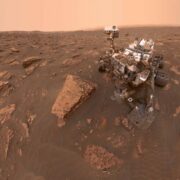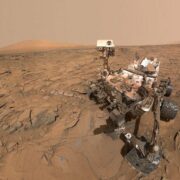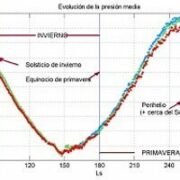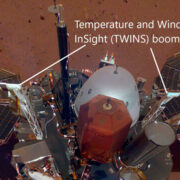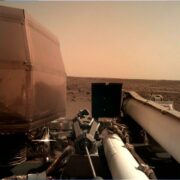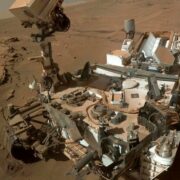Launch of the mission: 26/11/2011
Landing on Mars: 06/08/2012
Landing Site: Gale Crater
NASA’s Mars Science Laboratory (MSL) mission is part of the US agency’s Mars exploration programme. It is a scientific laboratory trying to determine whether Mars could have hosted life in the past.
The Curiosity rover arrived on Mars in August 2012 and since then has been characterising and studying its landing zone: the Gale Crater, a place with evidence of water in the past. This rover is part of the third generation of rovers NASA is sending to Mars. It weighs about 1,000 kg and is the size of a small car.
The Centro de Astrobiología is participating in the mission through the development of the REMS (Rover Environmental Monitoring Station) instrument, an environmental station that has been built in collaboration with the Spanish company CRISA.
The main objective of REMS, the first Spanish instrument sent to Mars, is the characterisation of the atmosphere of Mars through the environmental monitoring of the Gale Crater, as well as the analysis of the habitability conditions on its surface.
It consists of 6 sensors: relative humidity (RHS), atmospheric temperature (ATS), ground temperature (GTS), wind speed and direction (WS), atmospheric pressure (PS) and ultraviolet radiation (UVS).
REMS has been developed by a group of forty researchers (scientists and engineers) led by Centro de Astrobiología. The CRISA company, the Polytechnic University of Catalonia (UPC) and the University of Alcalá de Henares (UAH), the University of Michigan, the Jet Propulsion Laboratory (JPL), the NASA Ames Research Center, Caltech and the Finnish Meteorological Institute (FMI) have participated in the project.
In addition, Curiosity has 9 other instruments: APXS, an X-ray spectrometer to determine the composition of rocks and soil; ChemCam, a spectrometer to also analyse rocks; CheMin, designed to quantify minerals and the mineral structure of rocks with X-rays; DAN, a neutron detector that indirectly measures the amount of water by detecting the amount of hydrogen atoms in the subsurface; MAHLI, a microscope to image rocks, soil, ice and frost; MARDI, which imaged the descent and landing on Mars to provide information on the geological context of the environment; MastCam, an array of cameras that will record high-definition video and can make multi-spectral and stereoscopic images over distance ranges from a few centimetres to several kilometres; RAD, a detector to characterise a wide range of radiation for possible human exploration of Mars; SAM, to perform elemental and organic chemical analyses.
